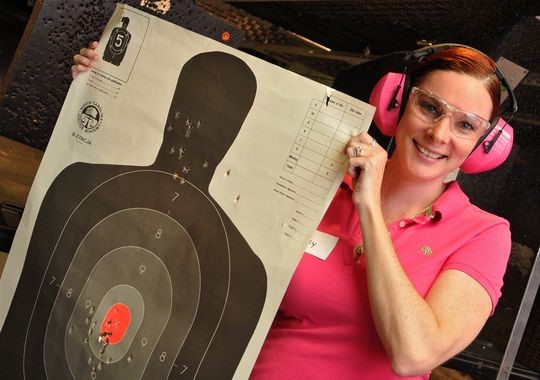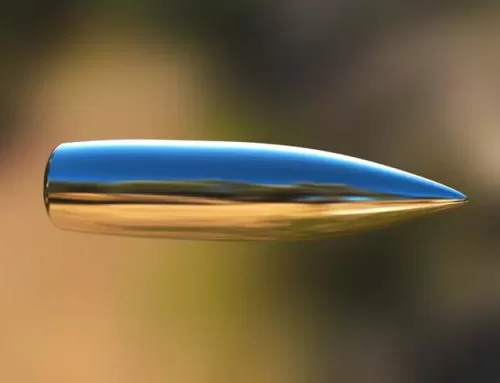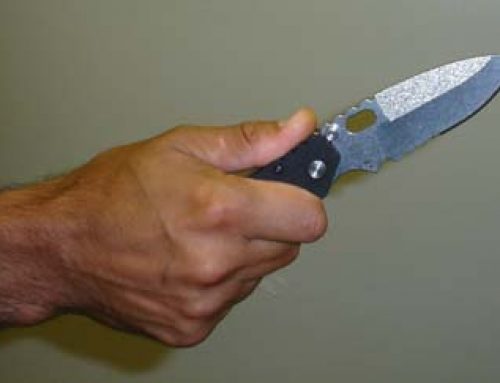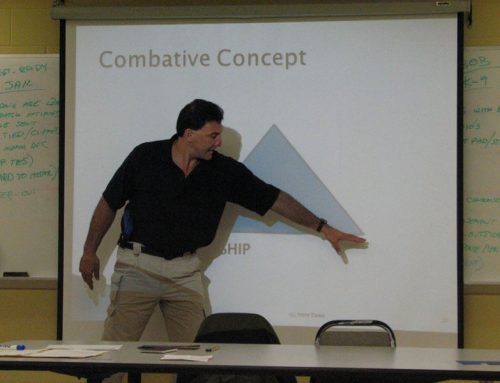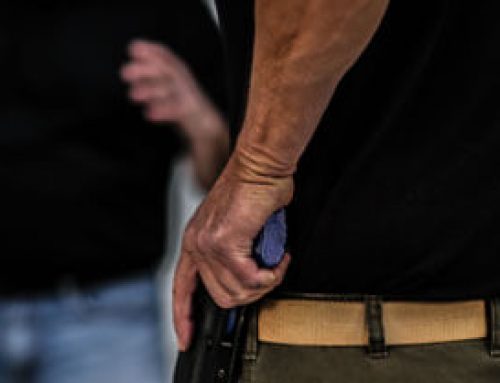A couple of years ago, a news reporter at a Detroit television station announced that people using guns to defend themselves from marauders may be the beginning of “an alarming trend.” Brace yourself, as the state of the Union may have further deteriorated since. In a related conversation, one of my training industry colleagues asked me if I had also noticed a similar trend – an increase of women in participation of more-than-cursory firearms training.
The answer is a resounding “yes!” The professional firearms instruction community is indeed witnessing more and more women of all demographics arming themselves in America. As a personal security educator, whose job it is to transform his clients into hard targets, this brings a tear of joy and inspired me to dig deeper. Inquiring of other professional educators plus a little snooping around the net for more detail, this turned out to be quite the hot topic. Although many reasons were suggested, the three most common out there seem to be: the need to independently defend oneself (self-reliance), current events, and the fact that it has never been easier to get involved.
But why now? It makes sense that more women seek to be individually armed as they become increasingly independent, but the number of female shooters has skyrocketed in just the past decade. The “Changing Gender of Permit Holders Data” for seven states shows a general upwards trend in the percentage of permit holders who are women. Florida: the percentage of permit holders who are women rose from 18% in May 2012 to 23.1% in June 2015. Indiana: from 18.0% in June 2012 to 22.7% in March 2015. Louisiana: from 18.3% in 2009 to 24.8% in 2014. North Dakota: from 11.2% in 2010 to 24.9% in 2014. Tennessee: from 23.3% in 2008 to 29.3% in 2014. Texas: from 17.26 in 2004 to 26.7% in 2014. Washington State: between 2005 and 2014 with the growth rate for women getting new permits is twice as fast as that of men. Assuming that these changes in the shares of permits held by men and women for these seven states is similar, the number of permits since 2007 has increased by 270% for women and by 156% for men. (Source: Crime Prevention Resource Center http://papers.ssrn.com/sol3/papers.cfm?abstract_id=2629704 )
Most of us are familiar with the 19th century quote “God made men, but Sam Colt made [them] equal.” Firearms are the great equalizer. The average woman is not as physically strong as the average man. In a violent hand-to-hand physical struggle against one or more male attackers, even if she goes to the gym five days a week, pumps iron and runs marathons, the woman is probably going to lose – unless she has a gun – and knows how to use it. According to Jason Hanson, a former CIA Officer and the author of “The Covert Guide to Concealed Carry,” the bottom line is, “a gun is without a doubt the best way for a woman to defend herself in a worst-case scenario.”
Armed and well-trained women are a predator’s worst nightmare. As such, it may be no coincidence that between 2007 and 2014, murder rates have fallen from 5.6 to 4.2 (preliminary estimates) per 100,000. This represents a 25% drop in the murder rate at the same time that the percentage of the adult population with permits soared by 156%. Overall violent crime also fell by 25 percent over that period of time. (Source: Crime Prevention Resource Center http://papers.ssrn.com/sol3/papers.cfm?abstract_id=2629704 )
It’s important to approach this topic from the bottom line: in a life-or-death defensive situation, a firearm operated by a qualified user is the most effective hand-held protection tool available to immediately stop a physical attack – bar none. This same premise explains why the majority of my clients – male and female military, law enforcement, and armed federal agents, are required to carry firearms and why they are also required to qualify with them regularly.
Even for those who don’t carry a weapon for a living, owning a gun satisfies only one aspect of personal protection with a firearm. Quoting another of my colleagues (USMC Colonel and competitive shooter) “The belief that owning a gun makes you safe is as absurd as believing that purchasing a scalpel makes you a qualified surgeon.” In both cases, the blind act of owning these tools alone without professional firearms and defensive mindset training, and preparation for their use, actually makes you less safe. The two other critical requirements for personal protection with a firearm include professional training and weapons maintenance as you are responsible for safe handling, accurate round placement and appropriate storage.
It seems that this “alarming trend,” as gleaned from interviews with female graduates of defensive firearms training from all over the country, provides a means of leveling the playing field, ensuring personal safety, and a sense of being in control. That sense of control is empowering, and is something firearms-trained women often seek in other aspects of their life. The personal confidence and self-assurance that is a by-product of firearms training, lends itself to a more positive self-image. An image that when observed by a predator hunting for his next victim, may cause him to realize that he may be the one in harm’s way.

